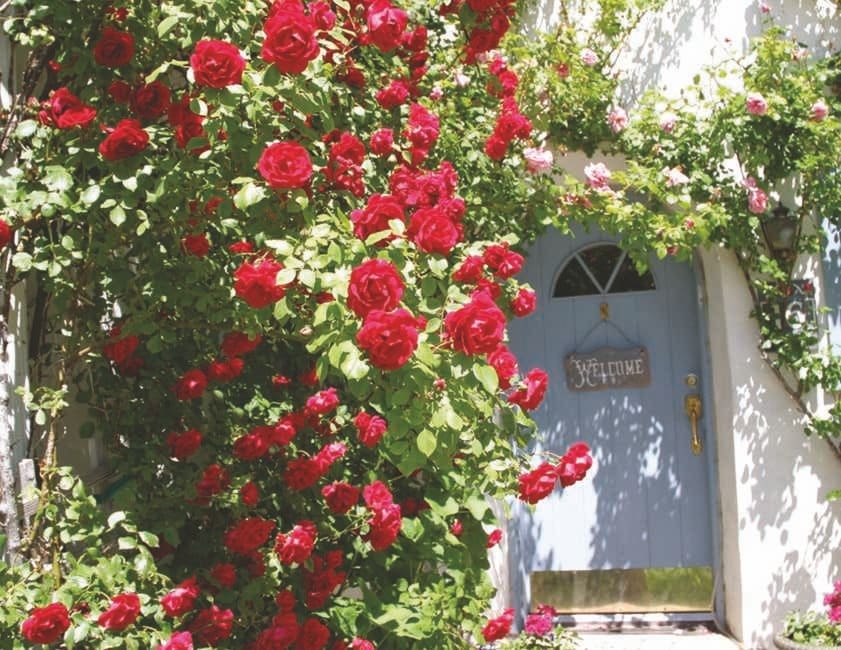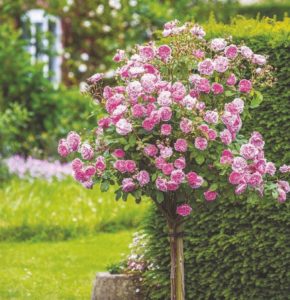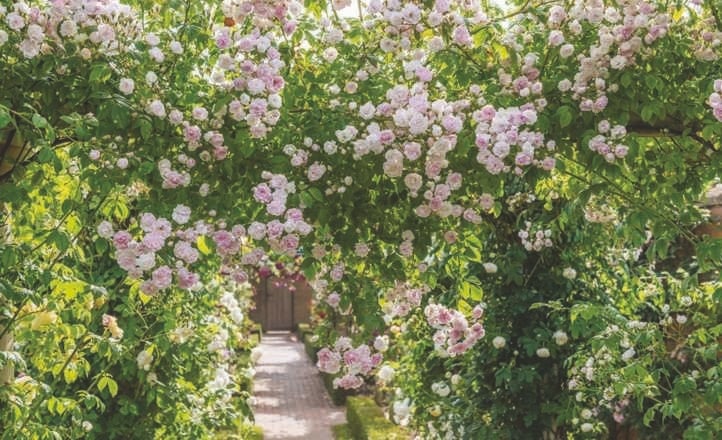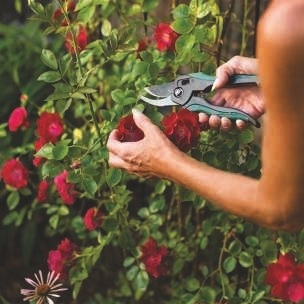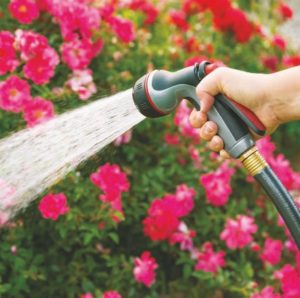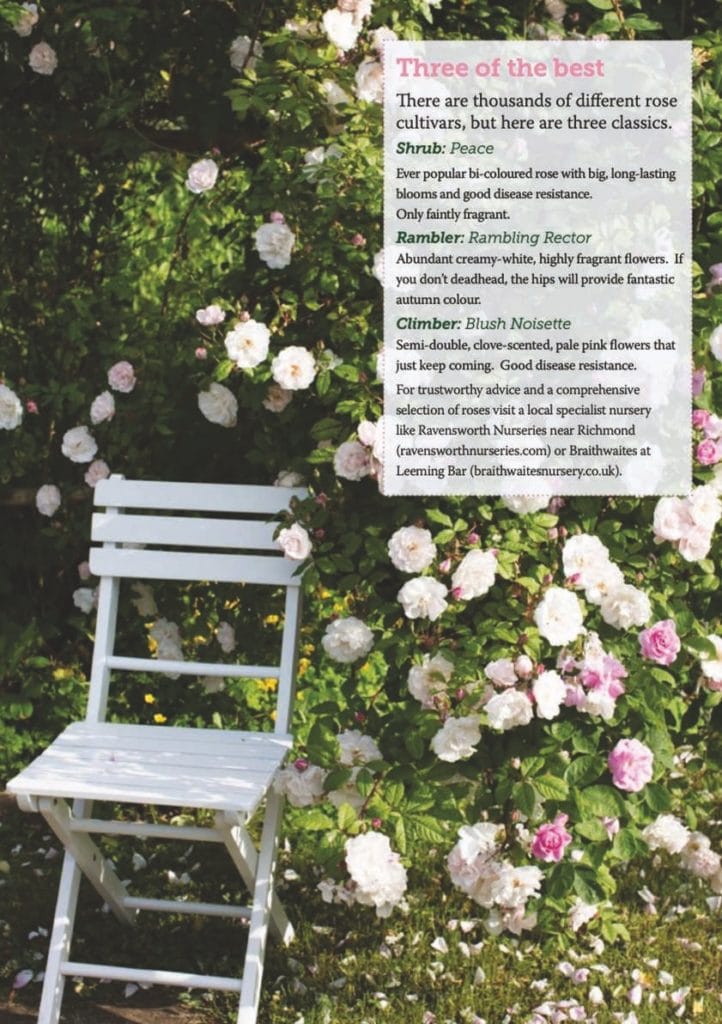Game of Thorns
Climber, rambler, ancient or modern rose? We provide a guided tour to the nation’s favourite flower.
No English summer garden is complete without roses, but if there’s one plant that causes consternation amongst gardeners more than any other, it’s the rose. Gardening books can leave novices floundering in a sea of detail, and as for pruning, rose experts will have you believe it’s a skill akin to brain surgery. However, by sticking to three easy to follow principles your roses will be plentiful and problem-free.
1. Right Rose for the Right Place
It’s crucial to know what kind of rose you’re dealing with – standard, shrub, rambler or climber. A bush rose won’t like being trained up a wall, and a climber will never make a tidy standalone plant. Ramblers are far too vigorous for your garden obelisk, or to live next to your front door. And if you’ve got a rose in the wrong place there’s only one thing to do: root it out and plant something more suitable.
Standards
Standards are easy to recognise – they’re lollipop shaped. They look good in formal gardens or containers on the patio.
Shrub Roses
Shrub roses are bushes. They can be trimmed to shape and used to add structure to the garden, just like any other shrub.
Climbers, Ramblers, Scramblers
Nothing sets off a house like a rose in full bloom trained against the walls, or draping the porch. Climbers or ramblers? It all depends on space. Most climbers are repeat-flowering and make a permanent framework of stiff stems that lend themselves to walls, pillars and pergolas. While roses enjoy sunshine, some will do on a shady north wall. Ramblers grow bigger, producing long flexible shoots from the base that are easy to train along ropes or over arbours, with large clusters of smaller flowers in early summer. Reserve the most rampant of these, such as ‘Rambling Rector’, to scramble up a tree or engulf an unlovely garage or shed – these are not roses for small spaces.
Roses for Containers
Patio roses come in every colour, rarely exceed 2ft high, and flower all summer. The smaller ground cover roses also take well to containers – some of the best are named after counties, such as free-flowering Surrey and Kent.
2. Prune Sensibly
Once you know what kind of rose you’re dealing with pruning is a doddle. Well-pruned roses live longer and perform better. February is a good time to prune roses, but never prune anything in freezing conditions. Give yourself plenty of time, use a good pair of sharp secateurs, wear gloves and thick clothing. If you’re tackling rambling roses with long stems, or very thorny ones, wear goggles too.
Healthy rose stems look olive-green. However dead, diseased or dying wood looks brown and needs to be removed. Look for any stems that head inwards, or cross and chafe against each other, and remove these to create an airy shape of strong healthy branches.
Look for outward-facing buds and make a slanting cut downwards away from the bud, about a quarter of an inch (5mm) above it and then the rain can drain away from the growing tip. Upright, repeat-flowering hybrid teas are cut back to six inches (15cm). Floribundas, shorter roses that produce clusters of flowers, are reduced to eighteen inches (45cm). Shrub Roses with long wands are generally reduced in length by a third.
3. Feed and Water
Roses are susceptible to a variety of diseases, but if you feed and water them properly they’ll most likely stay healthy. They are hungry plants that respond well to generous feeding.
Keep the area around the base of the rose free from competing plants, and sprinkle general-purpose or rose fertiliser around roses in spring at 70g per sq metre.
Mulch with rotted organic matter, ideally rotted manure, immediately after adding fertiliser. Keep the mulch clear of the rose stems, leaving a 10cm gap between the mulch and stems.
Feed roses in containers every fortnight from mid-spring until late summer with general-purpose liquid fertiliser until flower buds form and then with high-potassium liquid fertiliser, such as tomato feed.
Water ground-planted roses thoroughly every ten days during dry spells. It’s better to give them a good drenching once in a while than a sprinkling every day.
Posted in: Gardens
